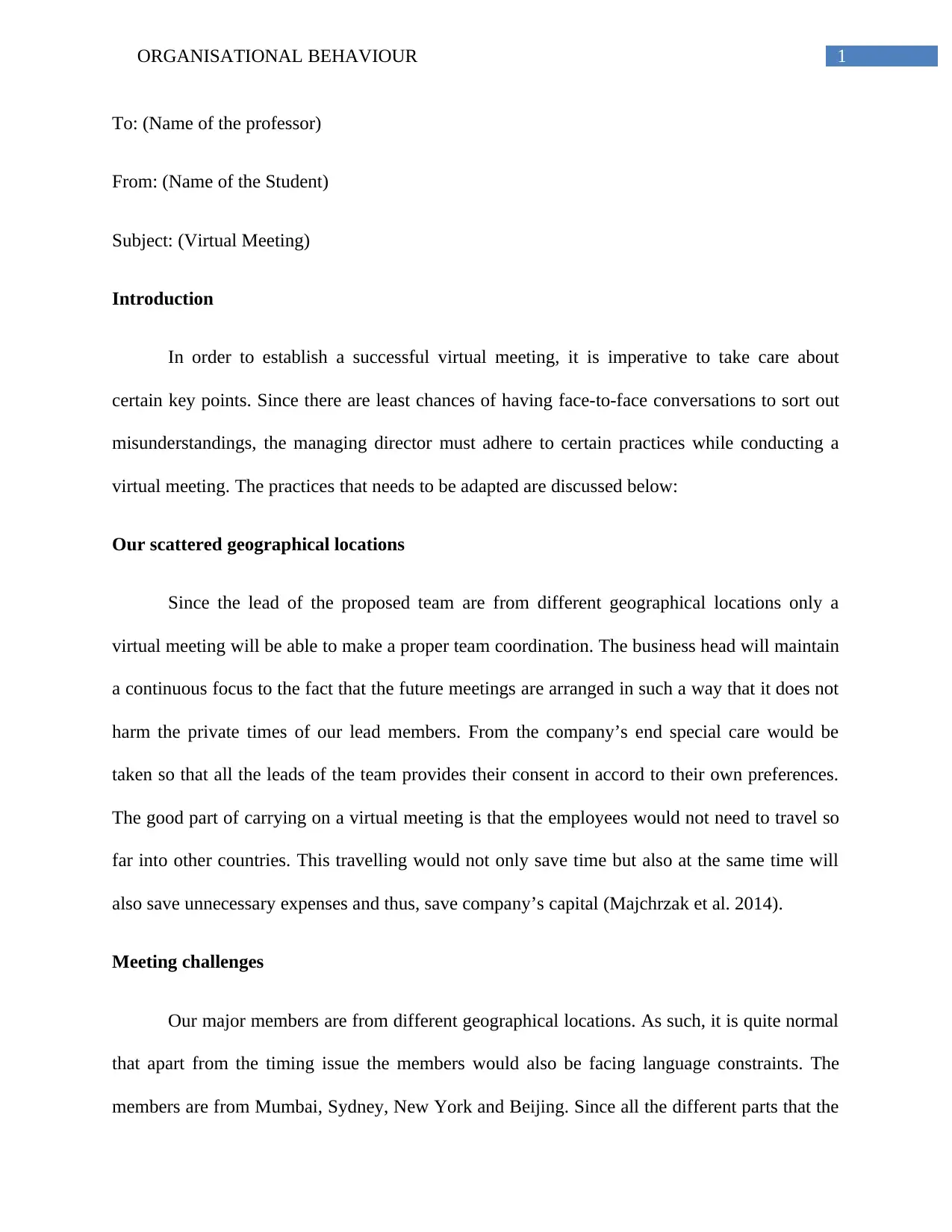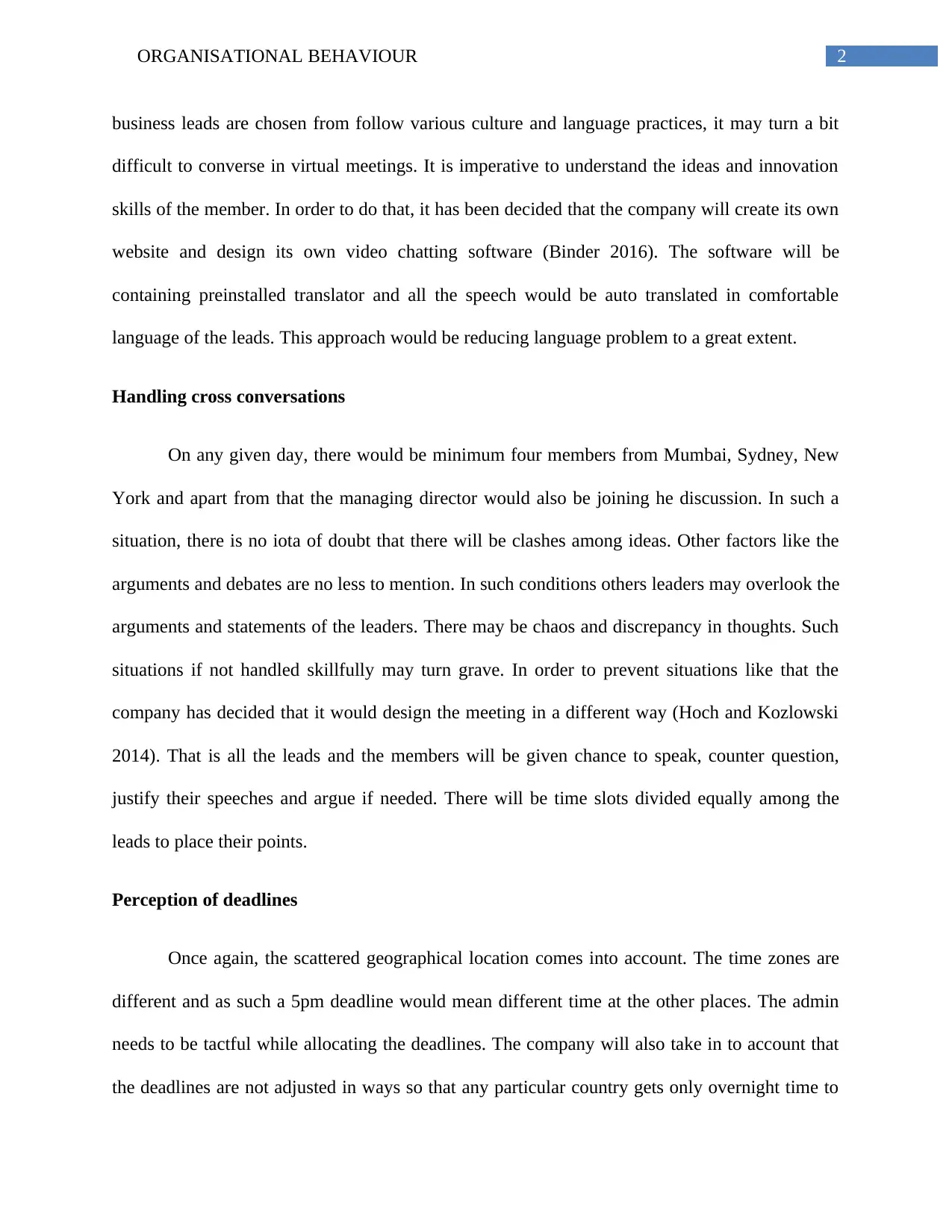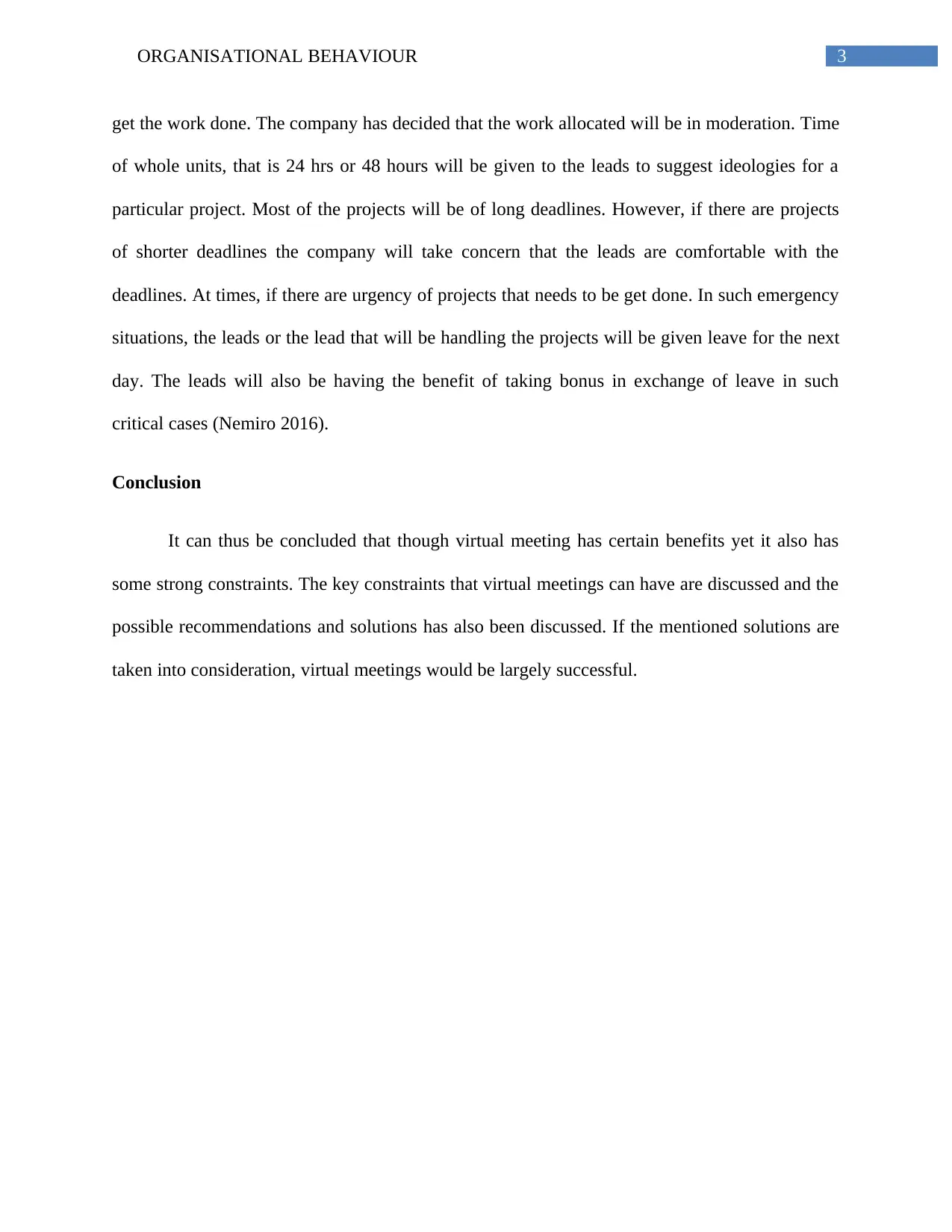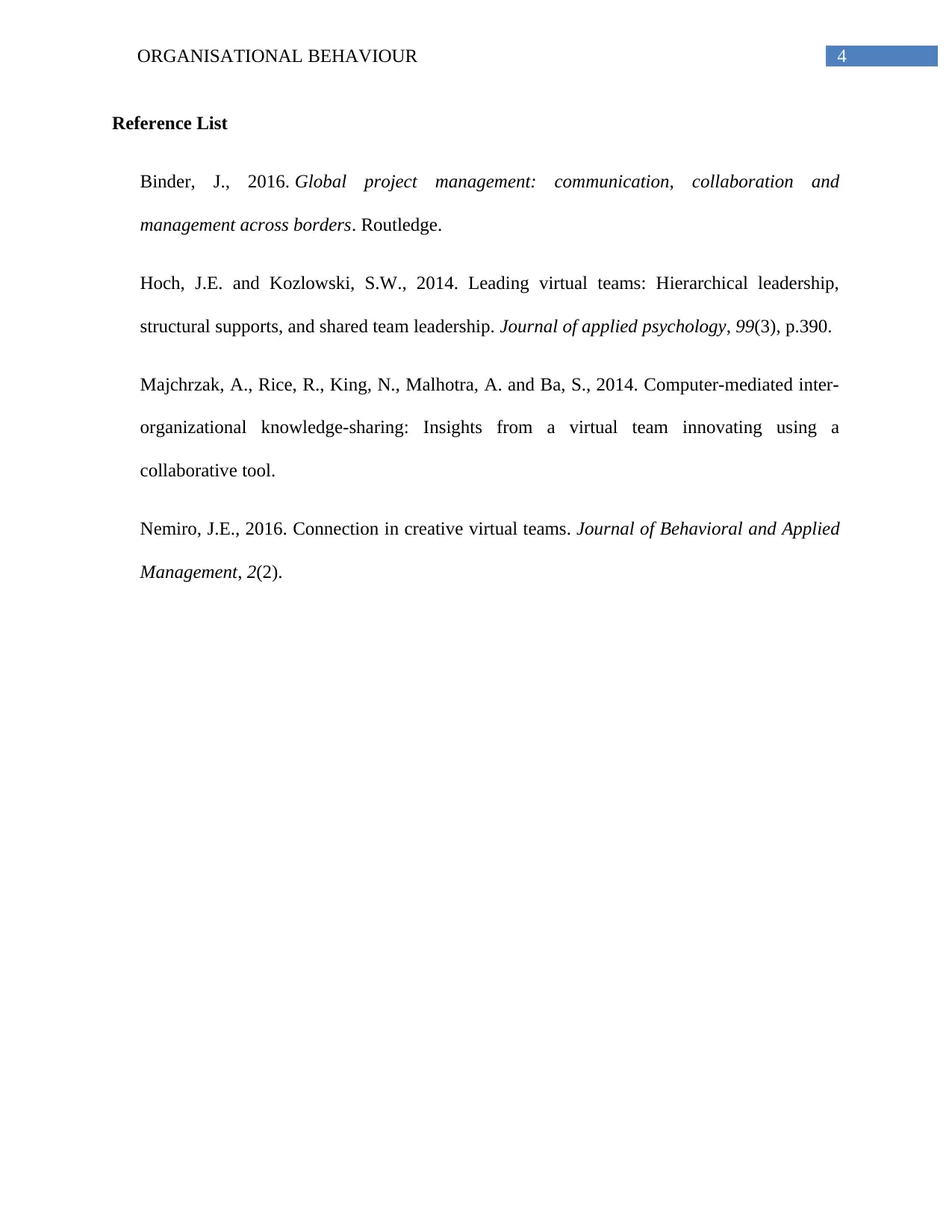MNG81001 Assessment: Managing Virtual Teams - Organisational Behaviour
VerifiedAdded on 2023/06/13
|5
|967
|115
Report
AI Summary
This report addresses the unique challenges of managing a virtual team spread across different geographical locations and time zones, specifically focusing on a marketing team based in Sydney with members in New York, Beijing, and Mumbai. The report identifies potential issues such as scheduling conflicts, language barriers, cross-cultural communication difficulties, and differing perceptions of deadlines. To mitigate these challenges, the report suggests solutions including the use of translation software, structured meeting formats to ensure equal participation, and flexible deadline management that considers the time zones of all team members. The report also emphasizes the importance of providing support and incentives to team members to address urgent project needs, such as offering leave or bonuses in exchange for extra work. Ultimately, the report concludes that while virtual meetings offer benefits such as reduced travel expenses and access to a diverse talent pool, careful planning and proactive problem-solving are essential for ensuring their success.
1 out of 5










![[object Object]](/_next/static/media/star-bottom.7253800d.svg)